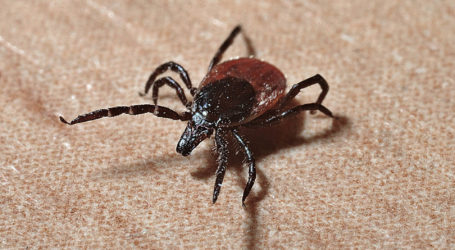Cornish blue: the greatest of cheese
General de Gaulle is famously said to have remarked of France “How can you govern a country that produces 246 varieties of cheeses?” The same can probably be said of Britain these days, and one of those cheeses, Cornish blue, has just won the top award at the World Cheese Awards, announced at the BBC Good Food Show in Birmingham yesterday.
Although Cornish Blue has won more than its fair share of awards, including Gold in the British Cheese Awards 2004 , Best Blue & Best English Cheese 2007 and Royal Bath & West Supreme Champion Cheese earlier this year, this is still a remarkable achievement for a cheese that started life in 2001, when Philip and Carol Stansfield decided they needed to diversify the their farm output.
Whether Cornish Blue really is the best cheese in the world, or even the best blue cheese in the world, is open to debate. I rather think that the French makers ofroquefort or bleu d’Auvergne might have a thing or two to say on the subject, the Italians might put forward mountain gorgonzola and the producers of stilton might feel a tad miffed, too. Unquestionably, there would be a clique that would hold that stitchelton, the cheese made to the stilton recipe but with raw (ie unpasteurised) milk, has a better claim.
What is without question is that there has been an extraordinary rise in the number and quality of cheeses produced in this country over the last 20 years. This has not simply embraced traditional cheeses, such as cheddar, cheshire, lancashire and caerphilly, but also a vast range of new cheeses, such as berkswell,sparkenhoe, tunworth, waterloo, ticklemore, ragstone, spenwood, flower marieand St James, to name but a few of the 700 all told, according to that doughty champion of British cheeses and founder of the British Cheese Awards, Juliet Harbutt. She also claims that the French only have 600.
As someone who has helped judge the British Cheese Awards in the past, I can say that not all the 700 cheeses are of equal merit. Any rational human being faced with the terrifying prospect of having to munch their way through the novelty cheese section of the awards would see a year of so on Devil’s Island as the softer option. However, there are enough great cheeses now being produced to create a cheese culture the equal of that of any country in the world.
This can be put down to three major factors. The first is that we are seeing the rise of the new peasantry in this country. That is not the disparaging observation it might sound. In every other European country, small-scale farmers, the traditional source of artisan foods, have been deserting the land in ever-increasing numbers. It’s hard, miserable, lonely work for not very much money. In the UK, on the other hand, we are seeing a return to the soil by people disenchanted with either their professional lives or with urban living generally, and who approach cheesemaking as a means of earning a crust and doing something more meaningful than what they were doing before. They bring with them enthusiasm, energy, open-mindedness and, frequently, commercial aptitude.
Secondly, the commercial potential of high quality cheeses has persuaded makers of traditional cheeses, such as Jamie Montgomery (cheddar) and Ian Kirkham(lancashire) to return to the cheesemaking fray with renewed gusto. And thirdly, the pressures and gradual restructuring of farming has also caused a number of farmers to look to cheese as a way of adding value to ingredients they already produce, as the Stansfields have.
The way ahead for both new and old wave cheese producers would have been a good deal harder had it not been for Randolph Hodgson. There had been earlier English cheese missionaries, such as Patrick Rance, who operated from the rather improbable billet of Wells Stores in Streatley on the Thames and James Aldridge, one of the first British affineurs, a specialist in maturing cheeses.
But it was Randolph Hodgson who combined his passion for cheeses with subtle diplomatic skills, and marketing nous, with most importantly, a background as a food scientist. When the government threatened to ban raw milk cheeses in 1989 – connoisseurs claim that it is only when made with unpasteurised milk that cheeses can achieve the sublime heights of which they are capable – he was able to assemble the scientific evidence to prove that the case put forward by the government’s scientific advisers was a load of baloney. He was also able to bind some of the most notoriously idiosyncratic food producers in the country into an effective group, Specialist Cheesemakers Association. This research has been used by other European countries to help protect and preserve their raw milk cheese patrimony.
There has been a corresponding increase in the number of specialist cheese shops – Ian Mellis in Edinburgh,La Fromagerie and Neals Yard Dairy in London, The Cheese Shop in Morpeth,Churchmouse Cheeses in Kirkby Lonsdale, The Cheese Works in Cheltenham and so on and so on. This would have been unimaginable 20 years ago. The internet has also played its part, allowing cheesemakers to bypass the normal distribution channels, and even supermarkets, rather belatedly, started stocking artisan cheese, although the relationships between some supermarkets an some cheesemakers have not always been marriages made in heaven.
“Many’s the long night I’ve dreamed of cheese,” says Ben Gunn in Treasure Island. He spoils it by adding “toasted mostly”. But as Christmas approaches, my dreams turn to cheese even more than they do normally. I’ll have no tuck or truckle with epoisse or compte or roquefort, manchego or parmigiano. It’s British and Irish cheeses for me. But will I stick to Yuletide orthodoxy, and lay in stilton? I think not. Stitchelton, if anything. I am a raw milk cheese man through and through. So there’s likely to be some cheddar, Montgomery’s or Keen’s. A mini Lancashire from Kirkham’s.
orwydd caerphilly, particularly if it’s just a touch squidgy beneath the rind. A round of creamy waterloo. Berkswell and spenwood and – well, I’m open to suggestions.










